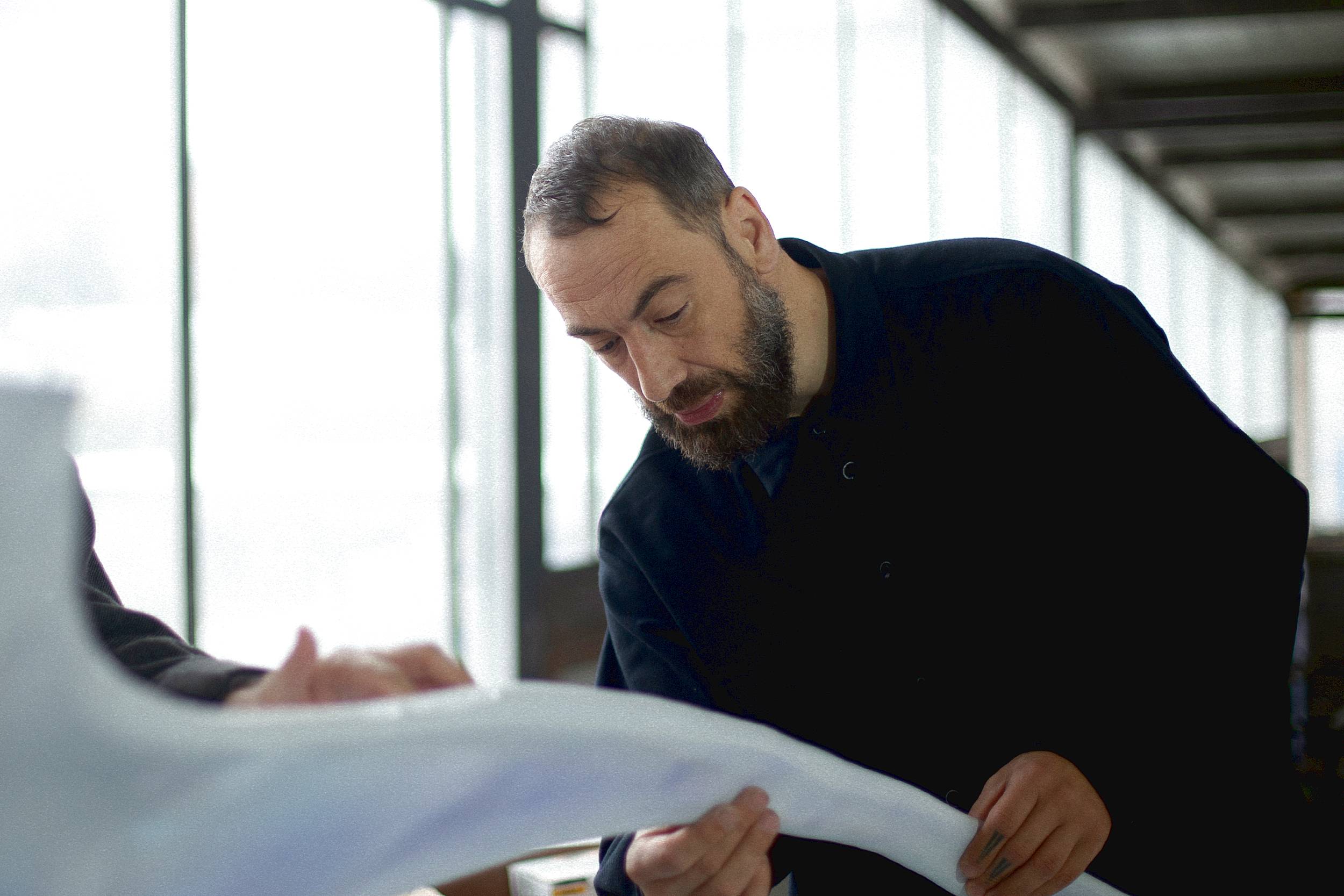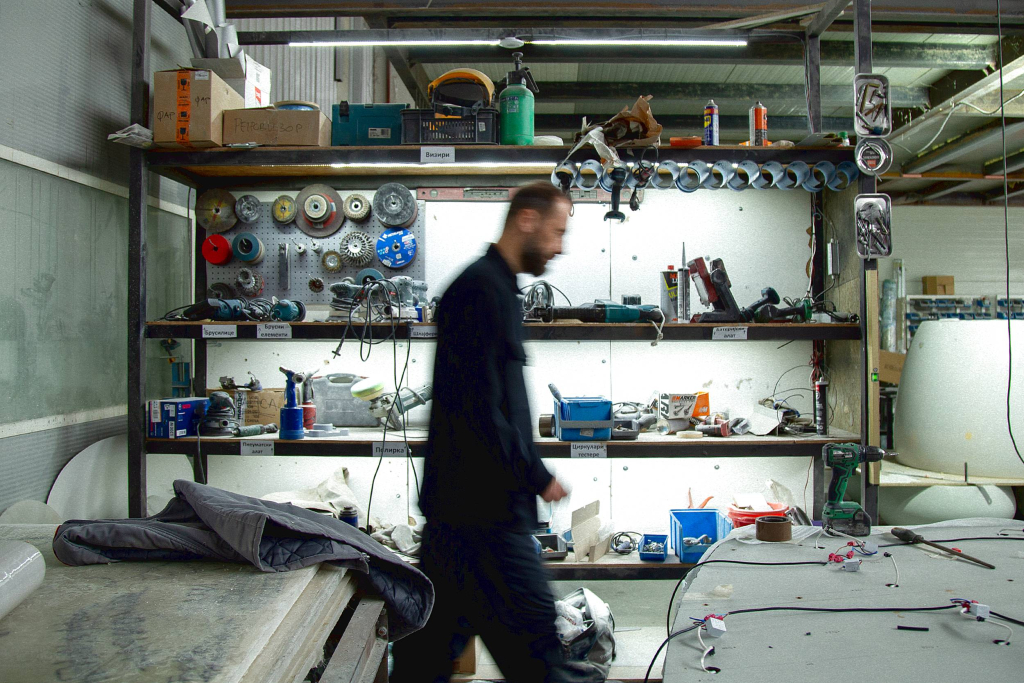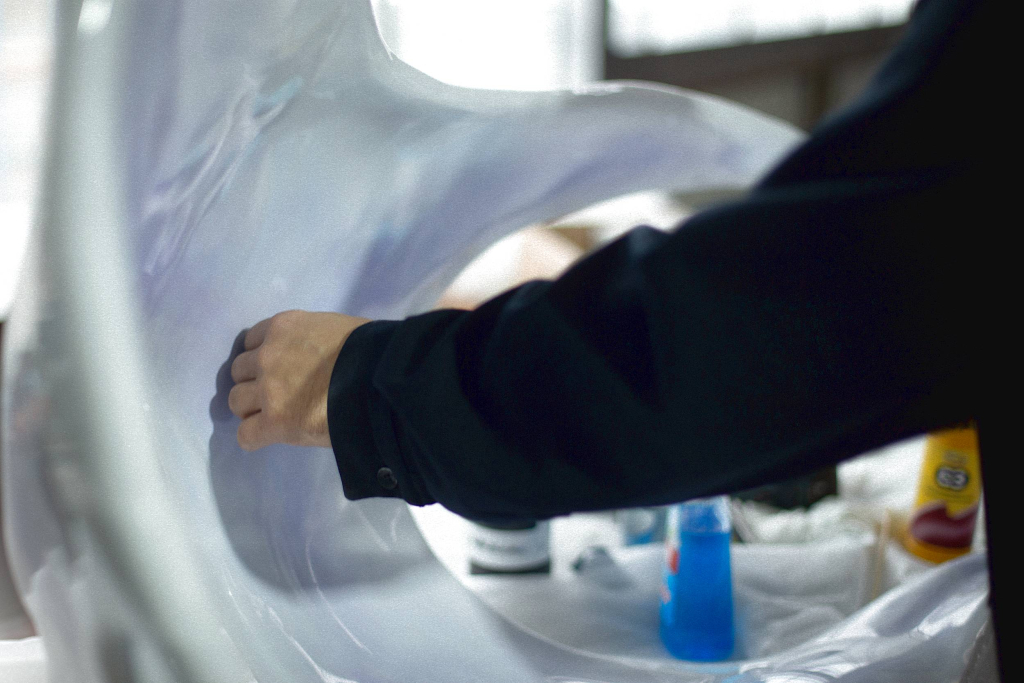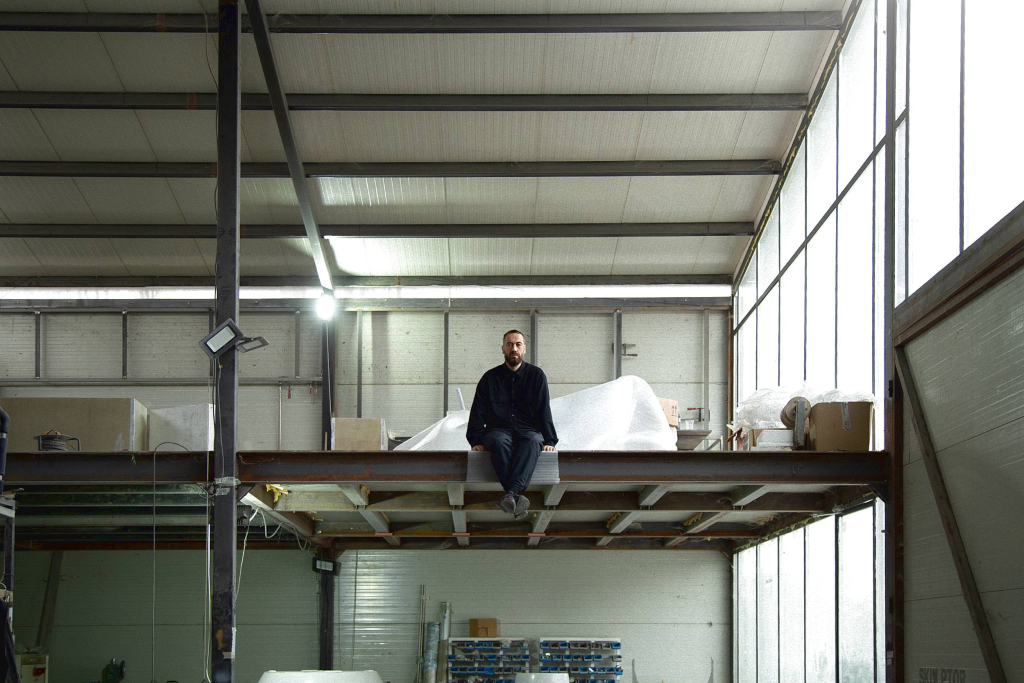Emir Šehanović creates art inspired by the future
In the Zagreb gallery Trotoar March 22nd will exhibit works inspired by nature and technology, works that are the legacy of the time yet to come.
by Tena Razumović ŽmaraMarch 5, 2024

In the Zagreb gallery Trotoar March 22nd will exhibit works inspired by nature and technology, works that are the legacy of the time yet to come.
by Tena Razumović ŽmaraMarch 5, 2024
After the Street Art Museum in 2014 in Zagreb, I no longer followed the street art artist Esh, but the artist Emir Šehanović. What happened to identity and art, I was interested. Where did Esh go? “Yeah… Esh disappeared into the past.” – Emir explains to me. “A natural transition happened, I felt that I had nothing more to do in street art, it became monotonous and boring to me. It was no longer that exciting to do street art. I clearly remember that moment, I was drawing in Zagreb at the street art festival. I draw and I work, I finish the work and I look at it and I just don’t feel the excitement that I used to feel. The sense of satisfaction is gone.”
At first, he “came out” from street art into space. From the space of the wall, which he perceived as a piece of clean paper, Emir began to “go out” into the space, he began to use architecture, he included the space in the work itself. He started to deal with sculpture and installation. He did site specific works, interventions in the space where he included the architecture in which the work was located, now as an integral part of the work. Then he moved from one to the other, he made what he says – a transition. “I went through several phases; portraits appeared, I used old photographs, figuration took place, but now all that has been lost, only abstraction and form remained, as if that prevailed, and of course a dose of creepiness in the works.” I was interested in that “creepy”, that “spooky” feeling and character of the works that Emir mentions in the conversation and I connect it with his interest in shamanism, occultism, pagan beliefs and representations. I was wondering if it was happening on purpose, out of some impulse, or if it “matched” by chance? “That was one of the first topics I researched. I don’t know for what reason, but it was interesting to me, and I was surrounded by such things, there are many of them in Bosnia. People practice such treatment, I went to those sessions because it caught my attention, that was my main reason. Interest and curiosity.” – And continues on about the experience of the first exhibition in Belgrade. “In Belgrade, I had the first exhibition of collages with such works. People approached me, asked for advice. And soon I realized that everyone had experience or contact with it.”

Marija Šehanović
Emir no longer deals with the topic of the occult and pagan in his art, he believes that he has started to repeat himself and has moved on to other motives and interests, he has moved into a new, I would say, sub-transition. He explains his constant change in a simple way, and it seems quite logical to me that he does so: “You can’t do one thing and the same thing all your life. Actually, you can, but how good is that? There are people who do one and the same thing, one subject, all their life I can’t do it. I’m starting to repeat myself. The question is, will there be another change? I don’t know. But it doesn’t even matter.”
In addition to media and types of art, Emir travels a lot and this constant change has given him a fairly good knowledge of the local and regional scene. I was interested in how he manages in the domestic, regional and international scene? Is there a difference between the Ex-Yu region and the rest of Europe? Are there similarities between Serbia, Bosnia and Herzegovina, Croatia, Montenegro and Slovenia? How does the scene work, especially when you change so much as an artist? “It’s a little easier out there, or rather – more organized.”
“For me, let’s say it’s a problem to get materials. There is more available material out there and it’s easier to try things, to experiment, to try various innovations. And this way, with limitations, you have to become more creative. There is a lot of material that I would like to test, get to know. And this is how I first have to order a smaller quantity, try it on, but first of all I have to wait for it to arrive at its destination. And I can’t order a lot of things, what if it doesn’t suit me.” Abroad is a different story. “Yes, you go to the store, buy and try it on the same day.” Hearing about the limitations that affect the artist’s work, I asked him how important these limitations are to him in his creative work, and Emir’s explanation cheered me up a little, I did not expect such optimism from him: “Resourcefulness comes from that. I would try it, I would play with one material and then you take another one and try it, maybe it’s better.”

Marija Šehanović
“Sometimes the unavailability of things and materials really bothers me, but in the end I always find a solution. And it turns out better. And in the end, in the end, it makes more sense for my work.”
Support is also important for good art, Emir pointed out in the conversation. “Although our scene is complicated, the market is the same, either it doesn’t exist, or it’s black, what’s good, what’s new is some new, younger art collectors. Collectors who are of the same generation as the artists, because that’s how they get along better , if not the best understanding. My works are best understood by collectors and colleagues of my age, generation. The support of colleagues from the scene is also important, we understand each other, if nothing else, we are in the same situations and problems and we help each other, we support each other. That’s us is great.”
“Where does your inspiration come from?”
“Nature and Technology.”
Great combination, I thought. I think that the future of humanity depends on the relationship between nature and technology, and to be positive, that relationship must be in harmony. Emir tries to imitate nature with new technologies. “Will we see such works, works inspired by nature and technology, at the exhibition in Zagreb’s Trotoar gallery, which opens to the public on March 22?” Somewhat reservedly, or perhaps mysteriously, he answered – yes. We managed to find out what awaits us in the gallery space: “I will exhibit new works, prints and sculptures. They will talk about exactly that, about that relationship, about nature. It is very important to me in my creativity. I think about her, about where is this world going? I don’t see a beautiful picture of the future, I see this apocalyptic world, as much as I don’t like that word – apocalyptic – but that’s how I see it. And my works are a legacy of the future.” Emir’s works as what is left of the future. I kind of like that thought, it even seemed comforting for a moment. I was wondering if his remnants of the future are creepy or hopeful? “Um… I don’t know. I wouldn’t say they give hope, but I find them beautiful.”

Marija Šehanović
“With the idea of improving ourselves, we will – destroy ourselves.” This Emir’s sentence sounded so terrible and true that he immediately wanted to clarify it: “I am not a prophet, nor am I an expert, but this is my personal opinion. As humanity, we are not going in the right direction.” And I thought, beautiful things will remain from the future. At this moment, in the future, in the Trotoar gallery in Zagreb.